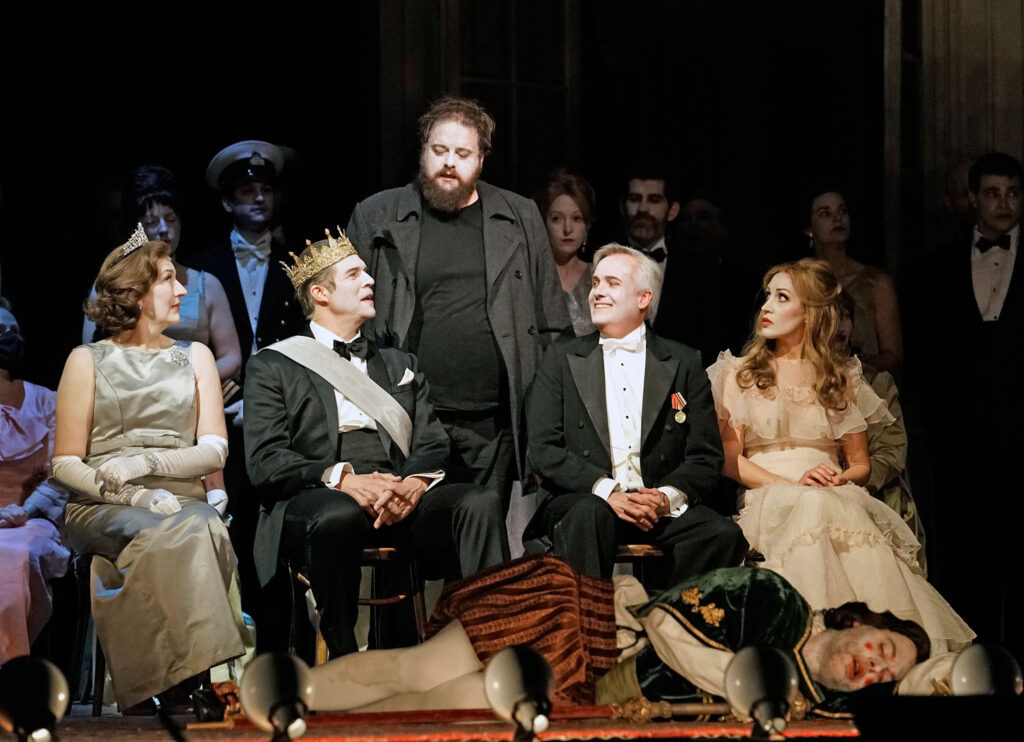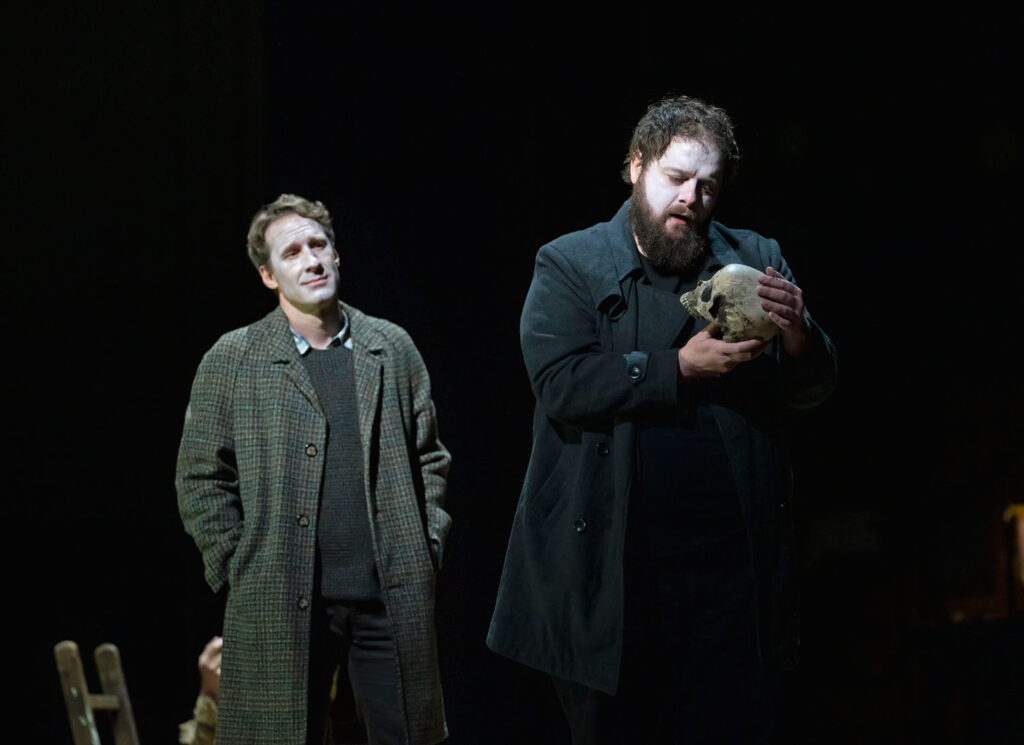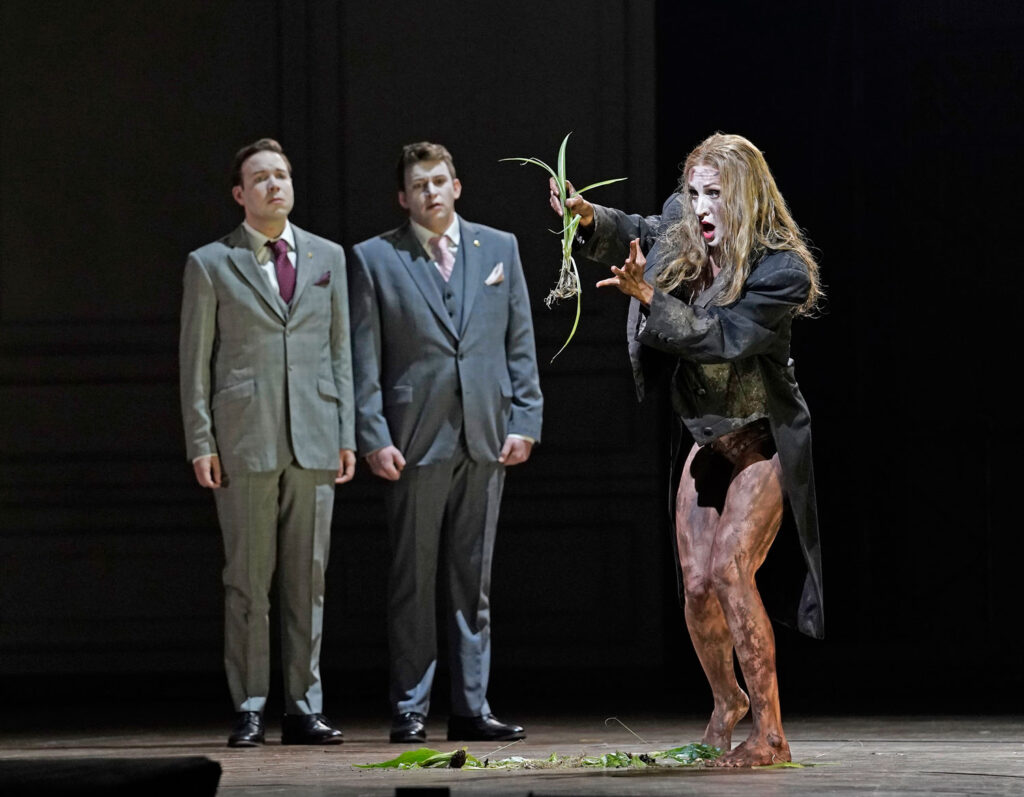Today, with post-romanticism and minimalism in decline, most new operas fall into one of two categories. They are either “popularist” or “modernist.”
Populist operas are crossover works. Building on Gershwin’s Porgy and Bess, Weill’s Dreigroschenoper, Carlyle Floyd’s Susannah, and other precursors, they use conservative classical music techniques to weave together snippets of church hymns, musical theater, world music, film music, jazz, blues, pop and other vernacular styles – often to set plots taken from movies, popular culture or current events. Recent examples include John Harbison’s The Great Gatsby, Tan Dun’s First Emperor, Jennifer Higdon’s Cold Mountain, Jake Heggie’s Dead Man Walking, Daniel Schnyder’s Charlie Parker’s Yardbird, Daniel Catán’s Il Postino, Mark-Anthony Turnage’s Anna Nicole, and (earlier this season at the Met) Terence Blanchard’s Fire Shut Up in my Bones. Such operas find special favor in the US, where (as compared to Europe) opera audiences tend to be less familiar with the canon, and more multi-cultural and populist in their musical tastes – and also where low state support tempts houses to favor “approachable” styles in the hope of building larger and more diverse audiences.

Elsewhere in the world, new operas are more likely to fall into the second category: modernist opera. These works eschew popular culture, seeking instead to extend and deepen the received 20th-century classical canon. Musically, they challenge audiences with atonality, extreme timbres, complex rhythms, and more technically demanding vocalism. Dramatically, most look inward, using the orchestra to probe and portray unconscious urges. Building on iconic predecessors such as Alban Berg’s expressionistWozzeck and Lulu, Claude Debussy’s impressionist Pelléas et Mélisande, the (post-) serialist works of post-war German composers like Hans Werner Henze and Karlheinz Stockhausen, and, in a more restrained way, those of Benjamin Britten, recent operas in this genre include Harrison Birtwistle’s Minotaur, George Benjamin’s Written on Skin, Kaija Saariaho’s L’Amour de Loin, and, perhaps to a lesser extent, the operas of Thomas Adès.
Hamlet, the second opera by Australian composer Brett Dean, lies firmly in the modernist camp. It premiered at the Glyndebourne Festival in 2017, appeared later at the Adelaide Festival, and is now concluding a run at the Met.
A successful composer of orchestral works, Dean seems uncompromisingly committed to sophisticated musical innovation and to probing the unsettled sub-conscious of the characters. He played viola with the Berlin Philharmonic for 14 years, and thus it is perhaps not surprising that he is a virtuoso of orchestral and choral scoring. For three and a half hours, the orchestra pounds, growls, rumbles, screeches, whines, titters, sighs and whispers; while choral voices intertwine and float alongside – all in ways that are new to opera. Dynamics range from an engulfing fortissimo to a nearly inaudible pianissimo. The harmonies are edgy, often etched in quartertones – even retuning instruments to achieve the effects he seeks. Dean replaces the hypnotic monotony of minimalism with subtly modulated variations, yet always with a firm pulse beneath – a combination that his skill and originality at writing percussion lines permits. Listening to this score is an immersive and visceral pleasure.

Perhaps most impressive is that in Dean’s hands, all this musical complexity does not seem the least bit gimmicky, but perfectly natural, powerfully moving and often emotionally unsettling. But to what end? Orchestral beauty – even if it resonates emotionally – does not alone make an opera great. In this respect, modernist operas typically grapple with two challenges.
The first is to rein in the orchestra so that the audience can appreciate vocal lines, which are both more emotionally compelling and connected to individual characters. Berg himself, who copes better than most, has been criticized for his overreliance on orchestra effects. The tendency of modern composers to focus primarily on instrumental music, while writing relatively few operas, only strengthens this temptation.
Dean struggles to strike a balance between the orchestra of 80, chorus of 40 and the soloists. Act I is extremely long, and throughout it, massed orchestral and choral forces often obscure individual vocal lines. (Or so I experienced it in the Met’s live acoustical space: the DVD of the Glyndebourne premiere is balanced with voices relatively louder and the orchestra subdued from the start, and is in this respect far more satisfying – but it is unclear whether this is simply produced by digital remixing.) At times singers to press to project choppy fragments of text through blaring accompaniment, making the text difficult (sometimes impossible) to comprehend. This is trying for those listeners think they know a Shakespearean play that, after all, turns on the multi-layered ambiguity of language. Is it presumptuous to wonder whether Act I (and the even end of some scenes in Act II) might perhaps benefit from what Mozart, Beethoven, Verdi and Wagner often found necessary to achieve their ultimate ends: a thorough re-write?

To Dean’s credit, however, the balance in Act II improves. Interestingly, this is achieved by retreating to the more conventional style of bel canto and Britten operas. The fragments of anguished expression in Act I are replaced by longer, more fully developed scenes. Indeed, Act II resembles a bel canto melodrama like Lucia di Lammermoor: a coloratura mad scene for soprano with light accompaniment is followed by an angry duel between the soprano’s brother and lover (witnessed by a chorus), and the act concludes with the lover’s quiet death scene. These are clichés, but they make for effective music drama focused on individual singing actors. This gives the audience more of an emotional stake in what the characters say and do.
A second and equally important challenge facing modernist like Dean is to find casts of assured and committed singers. Hamlet is a tough score to sing – and not just because the orchestra is assertive. It is technically demanding, verbally fragmented, and emotionally fraught. Drawing heavily on the world premiere Glyndebourne cast, the Met has assembled close to as fine a cast as exists in the world today – six of whom returned on Thursday night from a bout of COVID the preceding week.
English tenor Allan Clayton, who created the role at Glyndebourne, has the vocal beauty, technical skill and absolute emotional commitment required for greatness in this role. His bravura performance might make an even greater impression had he not been pressed to fortissimo during the first half of the night – as one can hear on the Glyndebourne DVD. Dramatically, Clayton exploits his “regular guy” looks, much as Simon Russell Beale did several decades ago in his celebrated Hamlet on the London stage.
Californian Baritone Rod Gilfry, English tenor David Butt Phillip, South African light baritone Jacques Imbrailol, American countertenor Christopher Lowery and English mezzo-soprano Sarah Connelly reprise their respective Glyndebourne assumptions of Claudius, Laertes, Horatio, Guildenstern and Gertrude. Like others, they struggle a bit with the orchestra early on but made more of an impression as the night goes on.
Singers making role debuts are equally successful. Canadian basso profondo John Relyea’s sepulchral depth stands out in the roles of the Ghost, the Gravedigger and First Player. Young American countertenor Aryeh Nussbaum Cohen sings and acts humorously in the patter role of Rosencrantz, paired with Guildenstern as a cartoonish Doppelgänger. While no one can match the technical security and lively characterization of Barbara Hannigan, who created the role of Ophelia in the original cast, American soprano Brenda Rae comes close in her mad scene, acting and singing up a storm. Best of all was veteran Floridian tenor William Burden, whose understated assumption of Polonius stands out in its impeccable diction, unforced projection, technical security, and elegant phrasing – regardless of how much competition he faces from orchestra and chorus.
It is a pleasure to hear the Met orchestra (augmented by two smaller bands on the side balconies) render such a demandingly beautiful score. Australian Nicholas Carter conducts with enthusiasm and rhythmic precision. Yet he and future conductors of this opera (for it is likely to find a place in the operatic repertoire) would do well to keep in mind that nearly every opera composer since 1850 – Wagner, Strauss, and Berg, for example – has struggled hard to keep the orchestral volume down.
Andrew Moravcsik
Metropolitan Opera
May 26, 2022
Hamlet
Music composed by Brett Dean
Libretto by Matthew Jocelyn
Hamlet ……………Allan Clayton
Claudius…………….Rod Gilfry
Laertes……………..David Butt Philip
Ophelia……………..Brenda Rae
Polonius…………….William Burden
Horatio……………..Jacques Imbrailo
Marcellus……………Justin Austin
Gertrude…………….Sarah Connolly
Ghost……………….John Relyea
Rosencrantz………….Aryeh Nussbaum Cohen
Guildenstern………….Christopher Lowrey
Player………………John Relyea
Player………………Manase Latu
Player………………Chad Shelton
Player………………Justin Austin
Gravedigger………….John Relyea
Offstage voice……….Monica Dewey
Offstage voice……….Chanáe Curtis
Offstage voice……….Tesia Kwarteng
Offstage voice……….Megan Moore
Offstage voice……….John Matthew Myers
Offstage voice……….Christian Mark Gibbs
Offstage voice……….Benjamin Sieverding
Offstage voice……….Wm. Clay Thompson
Accordian……………Veli Kujala
Conductor……………Nicholas Carter
Production…………..Neil Armfield
Set Designer…………Ralph Myers
Costume Designer……..Alice Babidge
Lighting Designer…….Jon Clark
Movement Director…….Denni Sayers
Above: Brenda Rae as Ophelia and Allan Clayton in the title role of Brett Dean’s “Hamlet.” Photo: Karen Almond / Met Opera